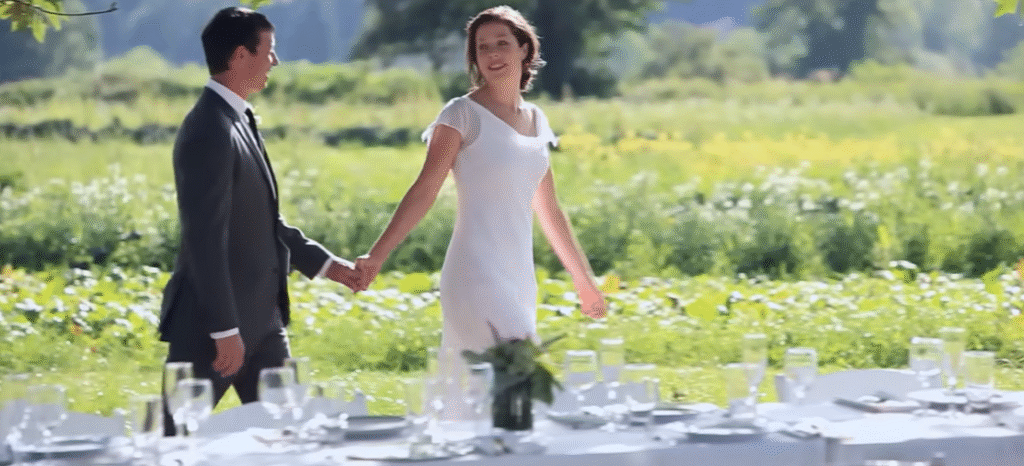America’s traditional marriage is slowly disappearing. The traditional notion of getting married is not being rejected, but rather reimagined as younger generations rethink their relationships. The true answer to the question of whether marriage is becoming better in the US or if it is becoming less common is found in the dynamic area between tradition and change.
The average age for a first marriage has increased significantly in recent years. The fact that women now marry at 27.4 and men at 29.5 shows how priorities in life have significantly changed. People are delaying marriage until they feel stable, much like they are delaying home ownership to ensure financial readiness. This decision, which is remarkably effective in reducing impulsive unions, is the result of careful planning rather than fear.
Cohabitation has taken the place of marriage for many people because it is more flexible and less demanding. Living together without any legal restrictions is thought to be especially advantageous, especially for younger adults who value independence and compatibility over formality. This change reflects a cultural shift in which mutual understanding, rather than legal documents, is used to gauge love and partnership.
| Topic | Details |
|---|---|
| Median Age at First Marriage | 29.5 (men), 27.4 (women) — up from 22.8 and 20.3 in 1960 |
| US Marriage Rate | Hovering near 50% in 2025; down from 72% in 1960 |
| Marriage vs Cohabitation | Rising cohabitation, decreasing marriage |
| Divorce Rate | Somewhat declined but still deterring for many |
| Socioeconomic Disparities | Education and income strongly linked to marriage likelihood |
| Racial Disparities | Only 30% of Black adults married vs 54% White, 61% Asian (as of 2015) |
| Financial Reasons to Delay | 47% of lower-income adults cite finances as reason not to marry |
| Celebrity Trends | Oprah, Shakira, Diane Keaton never married; cohabitation seen in Clooney, DiCaprio |
| Public Sentiment | 58% of never-married adults want to marry, 14% don’t |
| Reference | Pew Research Center |

Modern couples are creating relationships that work for them by working together to achieve long-term financial objectives. Marriage may seem like a risky financial decision to people in lower income brackets. Almost half claim that financial stress causes them to put off getting married. Without taking official vows, couples can frequently establish a very effective domestic partnership by utilizing shared expenses through cohabitation.
It is impossible to overlook the impact that celebrities have on public opinion. The long-lasting relationship between Oprah Winfrey and Stedman Graham, devoid of rings or formal documentation, has normalized commitment without any legal restrictions. Diane Keaton has publicly embraced being single, encouraging others to pursue happiness without seeking approval from others. Leonardo DiCaprio’s unending single status is indicative of a larger movement among public personalities to steer clear of conventional family models.
It’s interesting to note that although divorce rates have somewhat decreased, marriage decisions are still influenced by fear of separation. The idea of separating their financial and legal lives is intimidating to many. Younger adults are therefore deliberately delaying marriage or avoiding it entirely. Couples are entering marriage with greater maturity and awareness as a result of this measured patience, which is significantly improving relationship outcomes.
When socioeconomic data is integrated, a glaring disparity is revealed. The likelihood of marriage is considerably higher among adults with college degrees. The advantages—legal protections, social standing, and shared wealth—tend to favor the educated. This gap suggests that marriage is becoming less common and more of a privilege, which further encourages Americans with lower incomes to think about other options.
Millions of people reassessed their relationships during the pandemic. Health issues, job loss, and isolation led to both strained relationships and breakups. Resilience and social engagement were significantly higher among lifelong singles. Experts in psychology noted that during lockdowns, autonomy—which is frequently mentioned as a benefit of living alone—became a survival tactic.
Disparities continue to be glaring across racial boundaries. Compared to more than 50% of their White and Asian counterparts, only 30% of Black adults are married. These figures are more indicative of systemic issues than cultural preferences; factors such as educational access, incarceration rates, and economic inequality all influence these results. Nonetheless, a large number of single people establish solid, stable households, raise kids, and make significant contributions to their communities.
More Americans are defining family according to their own standards through cooperative efforts and strategic alliances. The range of household arrangements is growing, ranging from close friends co-parenting to unmarried couples raising children. Once regarded as unusual, these arrangements are now commonplace and, in many situations, remarkably adaptable in addressing both financial and personal needs.
Without getting married, Shakira and Gerard Piqué’s long-term relationship resulted in children, shared homes, and public devotion. Although divorce attorneys were not involved in their split, their union was just as genuine. George Clooney, on the other hand, demonstrated that commitment is determined by readiness and choice rather than age or tradition by delaying marriage until his 50s.
Even arranged marriages are changing in light of changing values. Hybrid models combine contemporary dating with family introductions, especially in immigrant communities. The focus is on consent, communication, and common objectives, providing a progressive yet culturally sensitive route to union.
Many Americans define love in terms of compatibility, trust, and growth rather than legality. Marriage is no longer seen as the sole route to fulfillment, despite the fact that some people still idealize it. By emphasizing these changes, it is evident that the US is merely turning the page on marriage rather than abandoning it.

